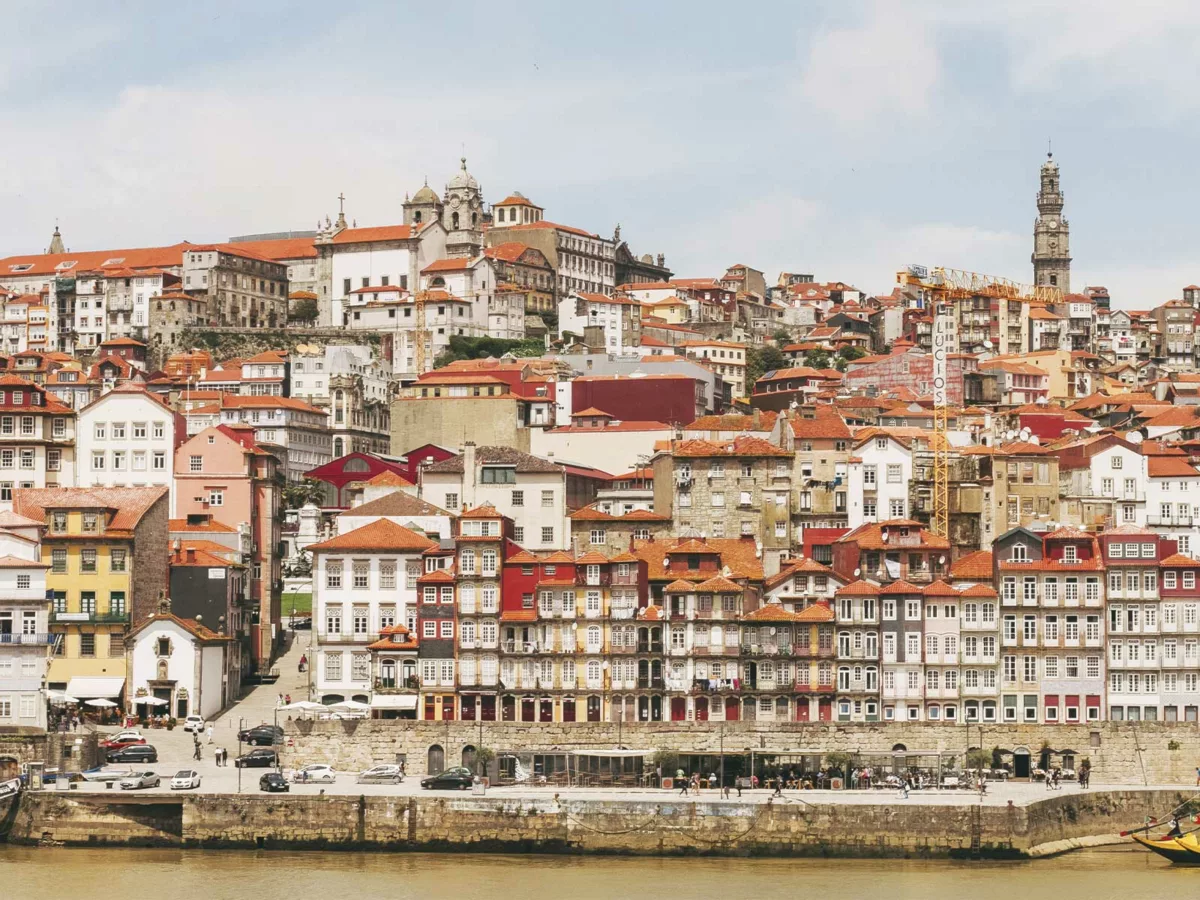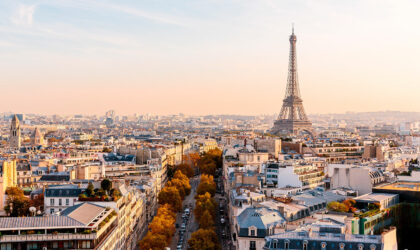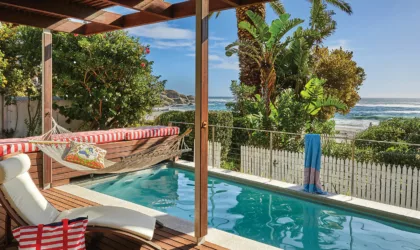“I think this might be one of my favourite hotels ever.” My husband, who has seen a few, is not one to gush. A multi-disciplinary designer with an inevitable eye for detail, he’s half the reason I’ve racked up 25 years as a hotel reviewer. So this is high praise indeed.
After a few nights in the luxury of grand Bairro Alto Hotel in Lisbon, Portugal – right in the heart of its namesake hood – and equally fabulous but funkier The Ivens (home to Rocco, a jewel box of a restaurant not to be missed), we are now comfortably ensconced in Hotel Das Amoreiras, a boutique hotel in the true sense of the word. Grand yet homely, with immaculately detailed finishes, it feels both opulent and restrained, classic yet contemporary. Every decision personally considered by owner Pedro Oliveira, who has carved 19 elegant bedrooms out of an abandoned three-storey 18th-century building, and created a womb-like restaurant that is dangerously cozy – morning breakfast here can stretch deep into the day.
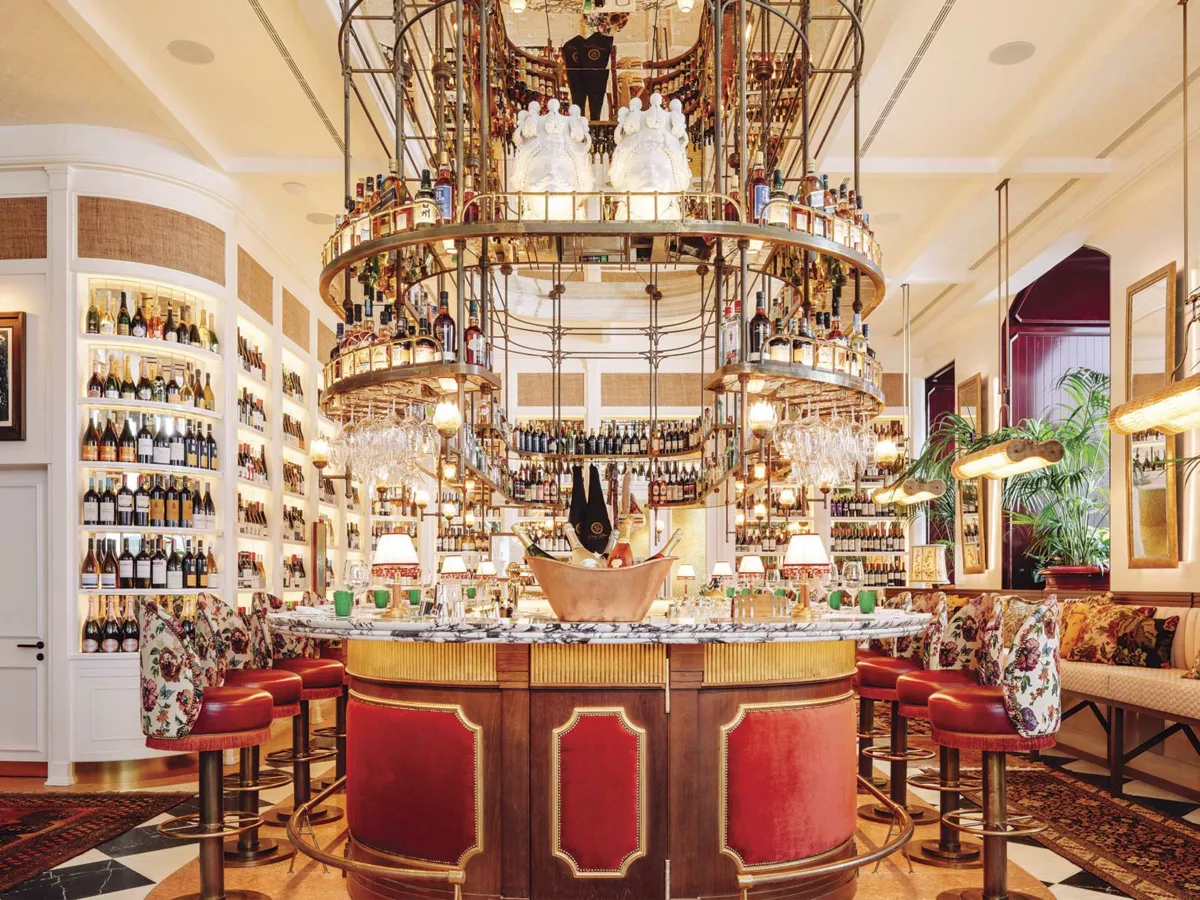
The location is pretty perfect too: overlooking Jardim das Amoreiras, a picturesque garden square dwarfed by the towering arches of the city’s famous aqueduct, an engineering feat that delivered water to Lisbonites from 1700 to 1968. Shaded by well-established trees and dotted with sculptures, the park is a drawcard for locals – frequented by children and parents who sit around the central kiosk-café sipping coffee, wine or beer, depending on the hour. Tram 24 stops here before trundling directly into Principe Real, its narrow high street lined with tiny bars and restaurants, and fashionable shops (Pica Pau, specialising in traditional Portuguese dishes, is so good we dine here twice; diagonally opposite is Embaixada, a palace repurposed into a treasure trove of shops showcasing only local designers and concept stores, to mention just two must-sees). From Principe Real it’s a downhill stroll into Bairro Alto, stopping to enjoy São Pedro de Alcântara “miradouro” (meaning viewpoint), one of a series of terraces cut into or cantilevered off Lisbon’s seven hills, a particularly fine place to be when the sun makes its final descent, turning windows on facing hills into glowing squares of molten lava.
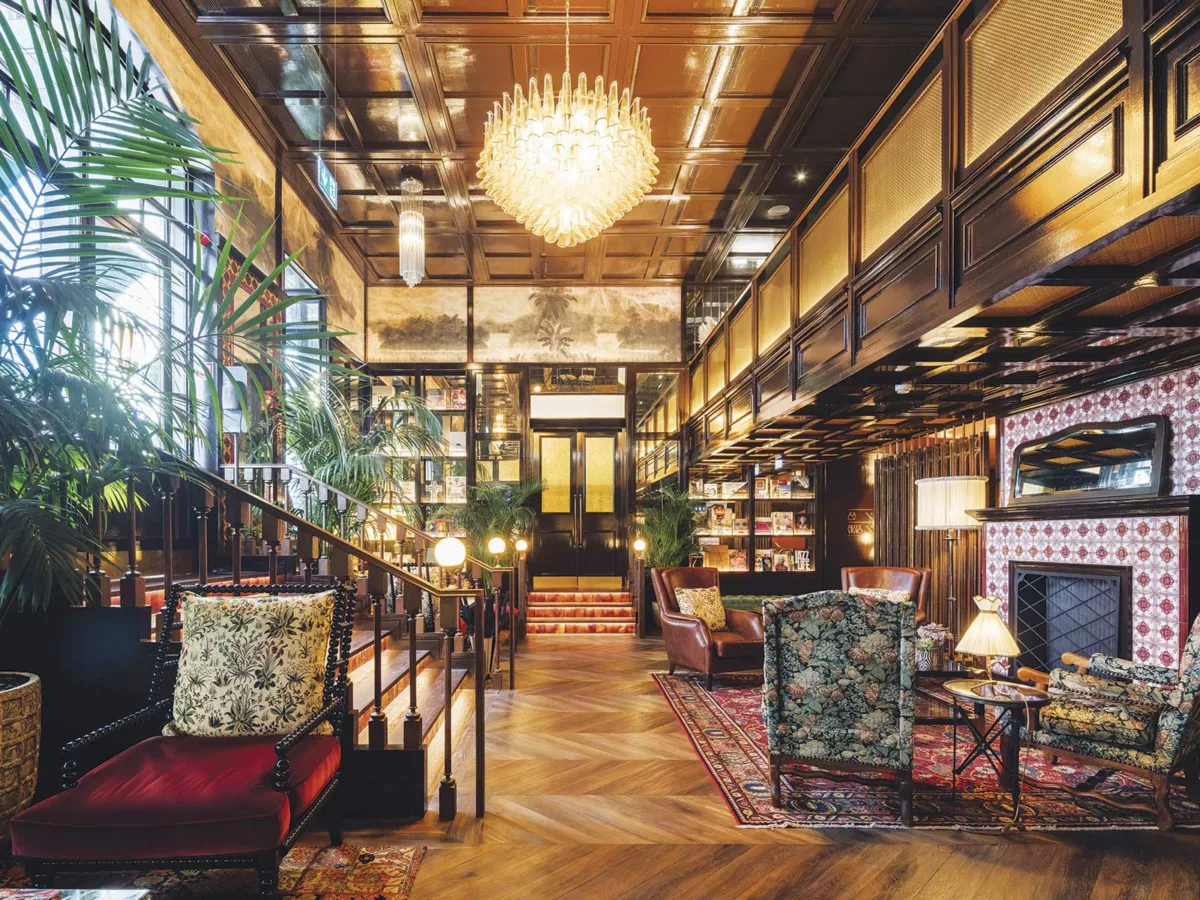
From here you can head on foot towards the Tagus, then veer west to the gastronomic warehouse that is Time Out Market. Or drop down into Baixa using the Elevador da Glória, one of three funiculars that take the strain out of strolling, and explore the narrow cobbled streets of Amalfa. This is the heart of the oldest (and most touristic) part of Lisbon, easiest done in one of the tuk tuks that beetle about, offering exclusive tours of different parts of the historic city. Pick one up outside Se Cathedral then sit back as the driver chugs uphill to more of the city’s most panoramic “miradouros”: Portas do Sol, Da Graca and finally Da Nossa Senhora Do Monte, the highest natural point in Lisbon, and the best place to see how undulating hillocks, carpeted in roofs and punctuated by spires, meet the vast expanse of the river Tagus.
It takes a mere three hours to get from Lisbon to Porto but we make a day of it, travelling via the monasteries of Alcobaça, Batalha and Tomar (if you have time to see only one, make it the jawdropping Alcobaça) and arrive at night into a twinkling fairyland – lights sparkling on steep hillsides of Porto and Vila Nova de Gaia, and glowing like embers in the Doura snaking its way through.
Gran Cruz House is right on the banks of the Douro, a seven-room hotel in the heart of historic Ribeiro. Getting anywhere in Porto is uphill from the riverbank but its vibrant with buskers and punters, and from our bedroom we have the most fabulous view of Porto’s bustling waterfront scene, and the metal arches of the Dom Luis I Bridge that connects Porto to the warehouses of Vila Nova de Gaia. We dine downstairs at Casario, the hotel’s cosy destination restaurant; the next day we catch a water taxi to the opposite bank and drink cocktails at Rooftop Bar 360 – who knew that port made such a great base? Ribeiro is heaving with little restaurants and bars; Taberna dos Mercadores, where we eat lamb chops with our hands (provenance Douro Valley; raised with love by Talho Loureiro, or so we are told), is both authentic Portuguese and makes us feel right at home.
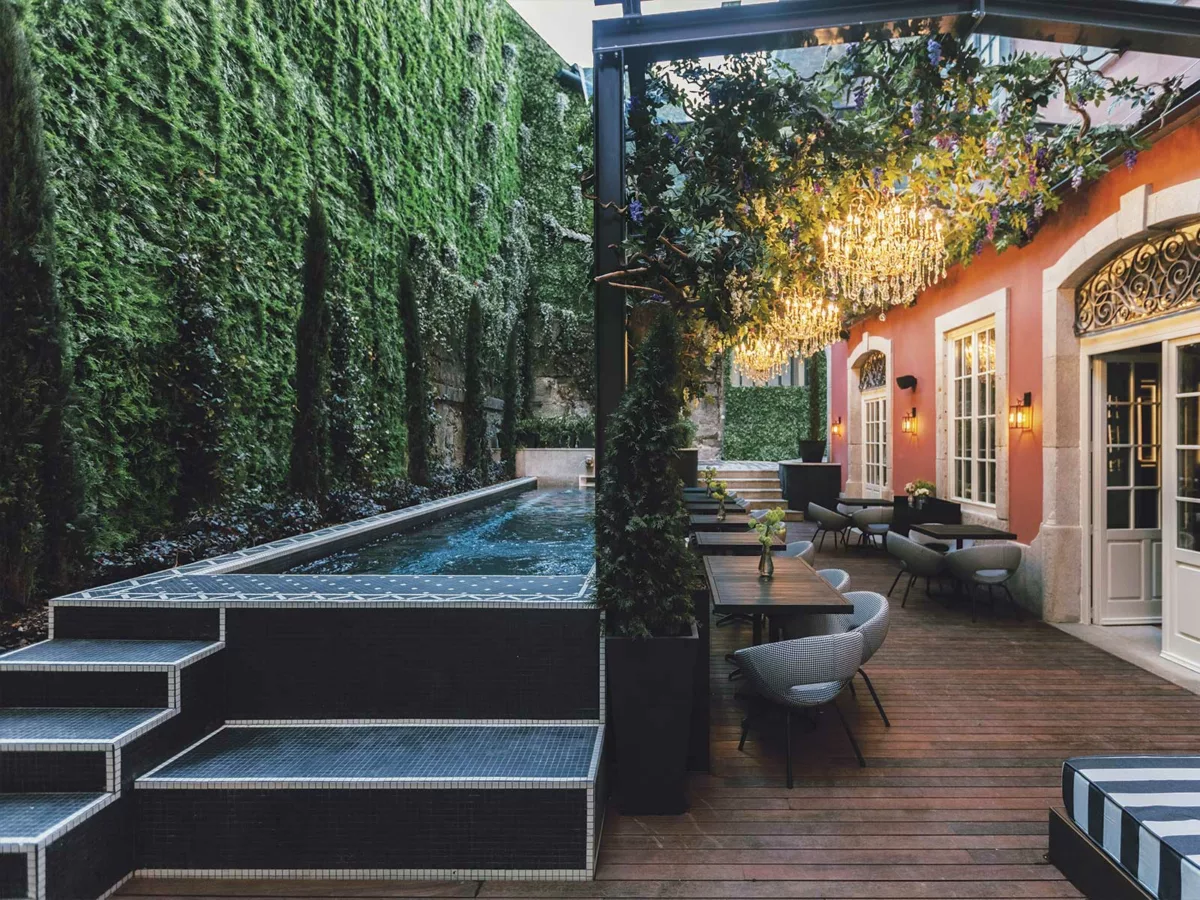
Porto’s steep hills are riven with narrow lanes that spread like rivulets down to the Douro. It’s dense with low-rise buildings, some derelict, most with original vintage signage. The visual effect is somehow a little Disney, like walking through a giant film set, but it’s a real city thrumming with local life, albeit apparently besieged by visitors in the summer. From great food markets (don’t miss Mercado do Bolhão) to fashion (Forty Degrees on Rue das Carmelitas, near Porto’s famous bookshop Livraria Lello, is a stand-out), the shopping is great. So is the nightlife. I drink too much wine at Aduela, a little tavern frequented by far too many good-looking young hipsters, then stop at Capela Incomum, located in a converted church, for ‘Peixinhos da horta’ – literally ‘little fishes from the garden’, these lightly battered beans are a Portuguese classic – and finish with a hearty pork and rice stew at Taberna Santo Antonio. Our new Porto pad is the 19th-century Torel Palace, where we sprawl under the most ornate ceiling. It’s an opulently creative hotel, themed around Portuguese writers and poets; the in-house restaurant called Blind honouring the novel Blindness by José Saramago. I am not usually keen on taking my stomach on a forced-march tasting menu but Blind blows us both away, every dish a multi-sensual surprise and beautifully balanced with the wine pairing…
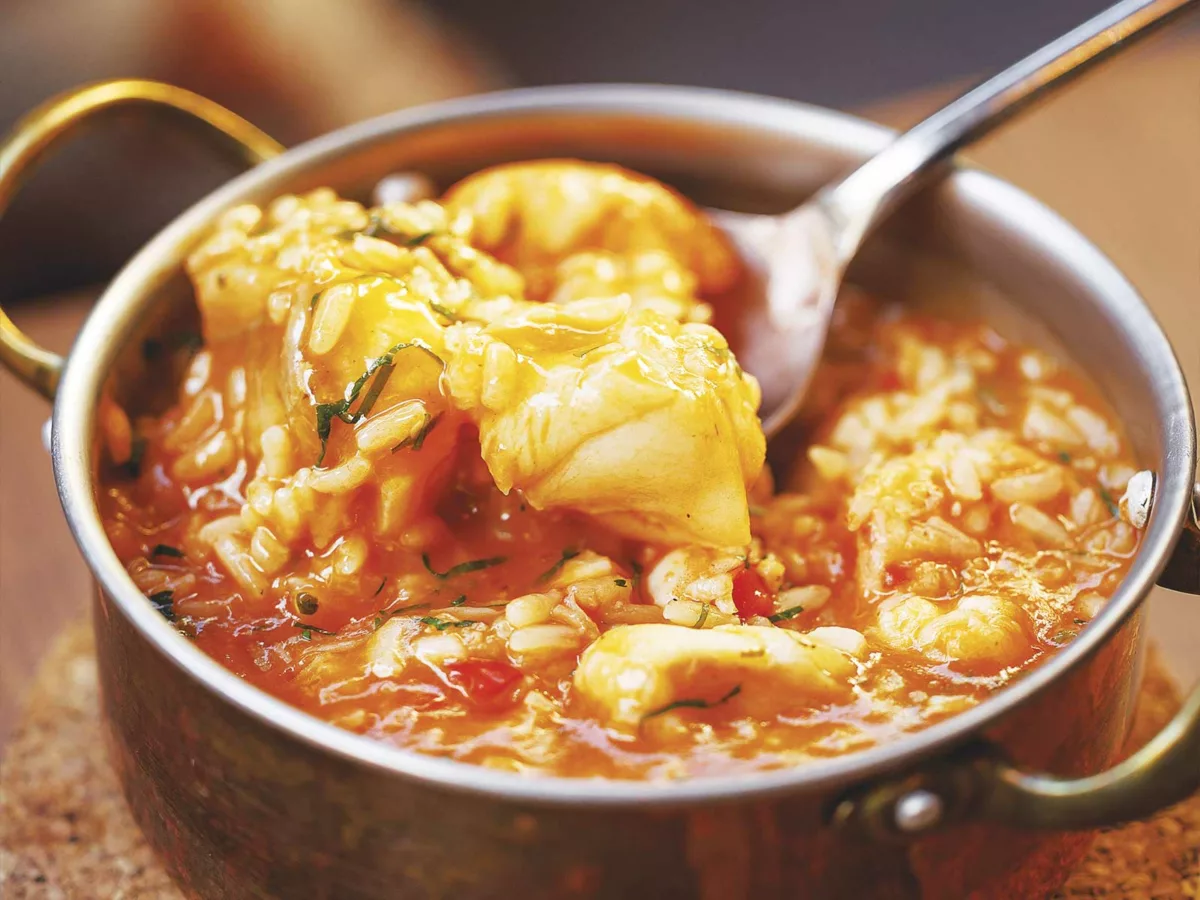
It has been said that wine only grows where it is beautiful, and the Douro – a 90-minute drive east of Porto – is Helshoogte Pass on steroids. Vineyard-braided mountains as far as the eye can see, interspersed with the occasional olive tree copse; cypresses like exclamation marks against white-washed walls. At dawn, thin tendrils of what look like smoke rise from the river, condensing into a thick blanket of mist that rolls through the valley before the sun reveals the steep stone terraces. It feels like it’s been here forever – in fact the vines first took root here more than 2 000 years ago. We spend a few nights at Quinta Ventozelo – a 13th century wine estate with a cluster of rustic-chic farm buildings dotted amidst vineyards that run all the way to the river (with a jetty to dive into the Douro) – before moving to Quinta Nova, first of the estates to have converted their historic homestead into an award-winning guest house. By day the views are magnificent; at night it’s inky black – the luxury of real darkness. Drinking a silky Mirabilis Tinto on their terrace high above the vineyards I watch occasional cars snaking their way along the river bank like glow worms. Heading home? Not quite ready yet.
Best Places To Stay
Lisbon: For Establishment Luxury: bairroaltohotel ; For Hip Luxury: theivenshotel.com ; For Boutique Luxury: hoteldasamoreiras
Porto: For Boutique Riverside Bolthole : grancruzhouse ; For Historic Luxury: torelpalaceporto
Douro: For Rustic Chic Luxury : quintadeventozelo ; For Classic Luxury : quintanova.com
For more of Portugal’s most beautiful properties and projects, oapartamento
by Pippa de Bruyn
